Side dish of artichokes and fresh fava beans as my mother used to prepare them in spring and for Easter. She also added a couple of potatoes, and so did I. Finally, spring, color in foods in the kitchen in all shades of green. Like peas and fava beans, zucchini, artichokes, and asparagus, rich in chlorophyll. Not only the color, but the important thing is the properties they have. For example, artichokes have an active principle, cynarin, which has the ability to act as a liver purifier. They are very low in calories and, besides being healthy, they are good with only one defect: a lot of waste. Fava beans are legumes with a good source of vegetable proteins, vitamins, fibers, and minerals. Consumption is only problematic for those who suffer from favism. A particular condition that manifests after ingestion due to a genetic deficiency. We can add from medical sources that nutritionists have found that consuming fava beans helps reduce cholesterol. They contain soluble fibers that reduce fat absorption. Contributing to keeping cholesterol low, just like alpha-linolenic acid helps reduce cholesterol levels. Discover my review on the Versilia 28 cm multifunction pot 8 in 1 Cookut La Fabuleuse
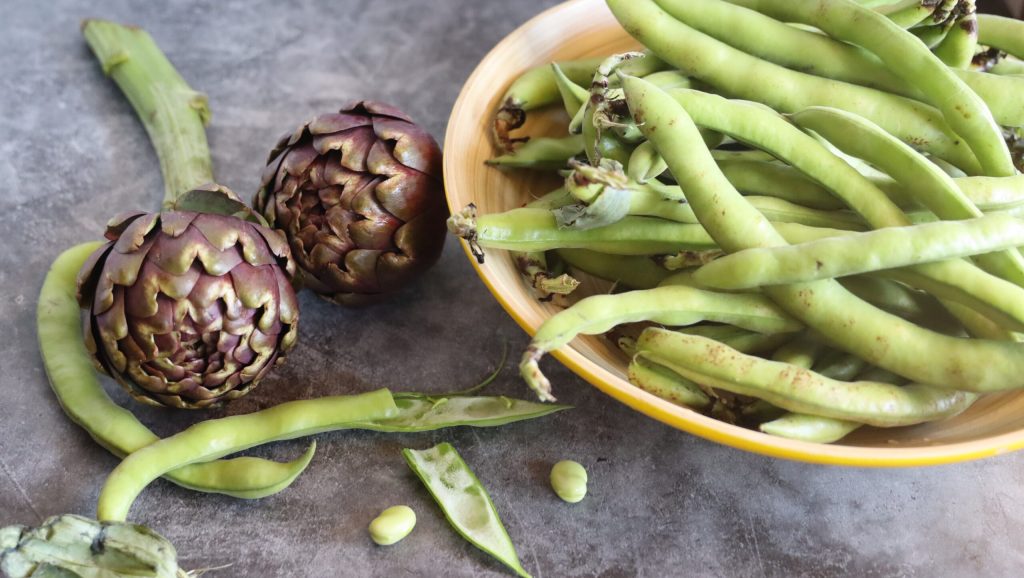
- Difficulty: Easy
- Cost: Medium
- Preparation time: 40 Minutes
- Portions: 4
- Cooking methods: Stovetop
- Cuisine: Italian
- Seasonality: Fall, Winter and Spring, Spring
- Energy 317.09 (Kcal)
- Carbohydrates 32.61 (g) of which sugars 5.78 (g)
- Proteins 13.92 (g)
- Fat 15.23 (g) of which saturated 2.13 (g)of which unsaturated 0.26 (g)
- Fibers 17.70 (g)
- Sodium 897.95 (mg)
Indicative values for a portion of 190 g processed in an automated way starting from the nutritional information available on the CREA* and FoodData Central** databases. It is not food and / or nutritional advice.
* CREATES Food and Nutrition Research Center: https://www.crea.gov.it/alimenti-e-nutrizione https://www.alimentinutrizione.it ** U.S. Department of Agriculture, Agricultural Research Service. FoodData Central, 2019. https://fdc.nal.usda.gov
Ingredients for preparing the side dish of artichokes and fresh fava beans
- 2 pcs artichokes (cleaned 10.58 oz)
- 24 oz fava beans (cleaned 10.58 oz)
- 1 cup potatoes
- 1 oz leek
- 10 oz water
- 1 tbsp salt
- 4 tbsp extra virgin olive oil
- 3 leaves parsley
Tools for preparing the side dish of artichokes and fava beans
- Pot
- Bowl
- Cutting Board
- Knife
- Peeler
Useful steps for preparing the side dish of artichokes and fresh fava beans
Slice the leek thinly and let it gently wilt in the pot with half of the extra virgin olive oil. If you like, you can also add some whole parsley stems as I did.
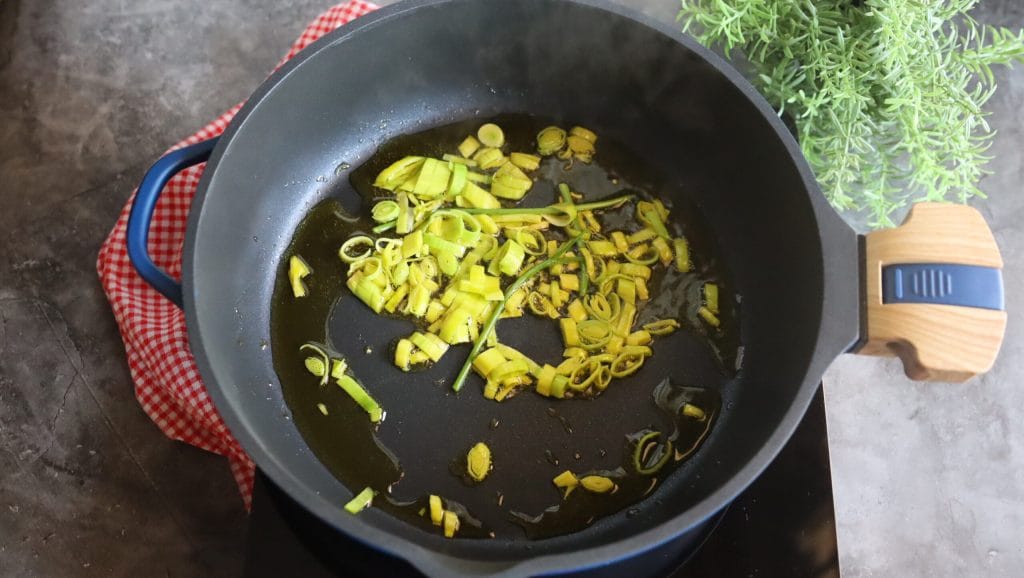
I had the patience to peel the pod and remove the outer skin of the fava beans, but if you want to leave them, consider a few more minutes for cooking.
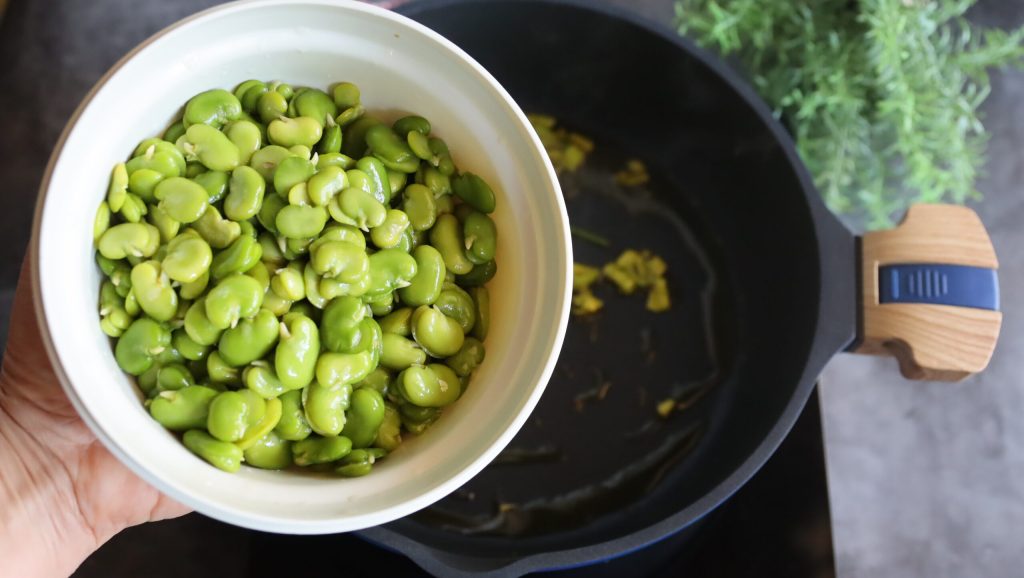
When the leek has wilted, add the fava beans and let them slightly brown.
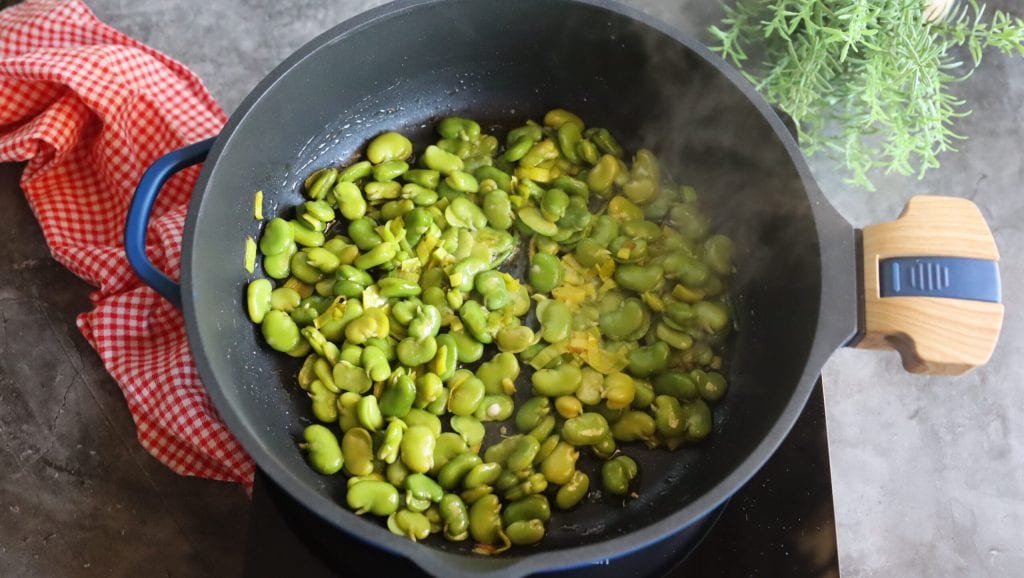
Peel the potatoes and cut them into chunks. Do the same with the artichokes: remove the outer leaves until you reach the light part. Cut off the tip of the artichokes even if they don’t have spikes, divide them in half and also remove any choke. Cut them into wedges and immerse them in lemon water.
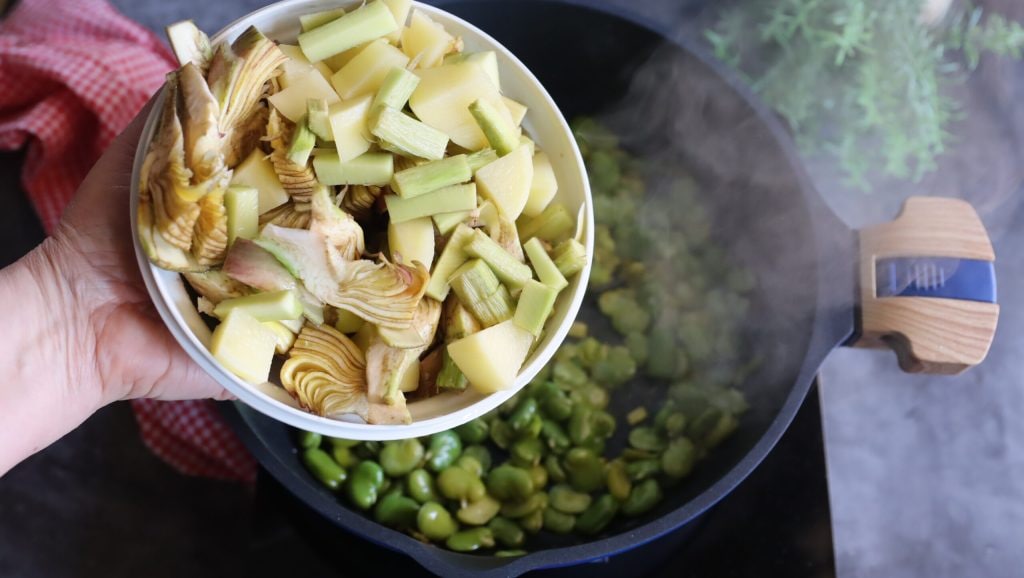
Drain them from the water and pour the artichokes and potatoes into the pot along with the fava beans and leek.
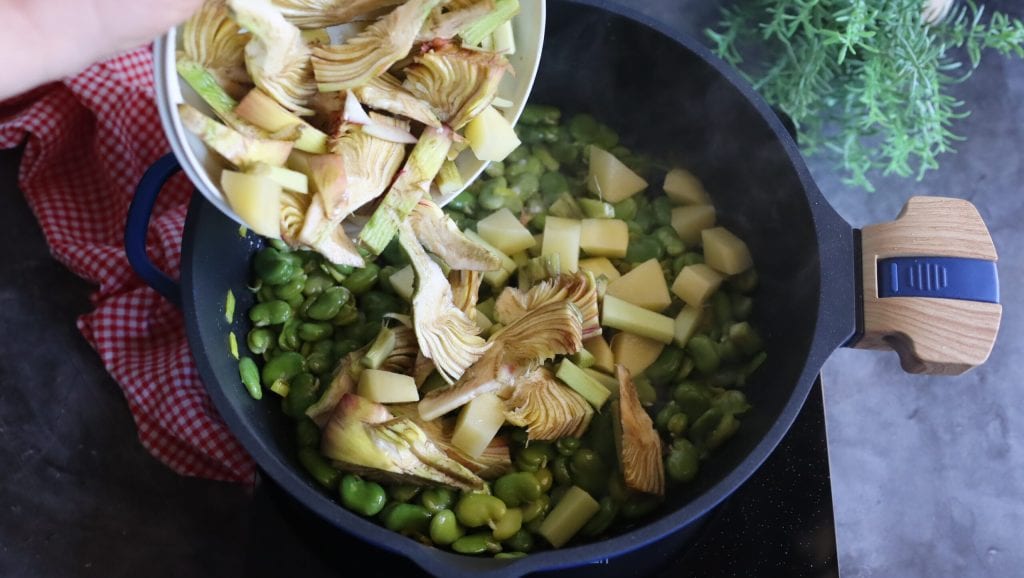
Stir and cover with the lid for a few minutes.
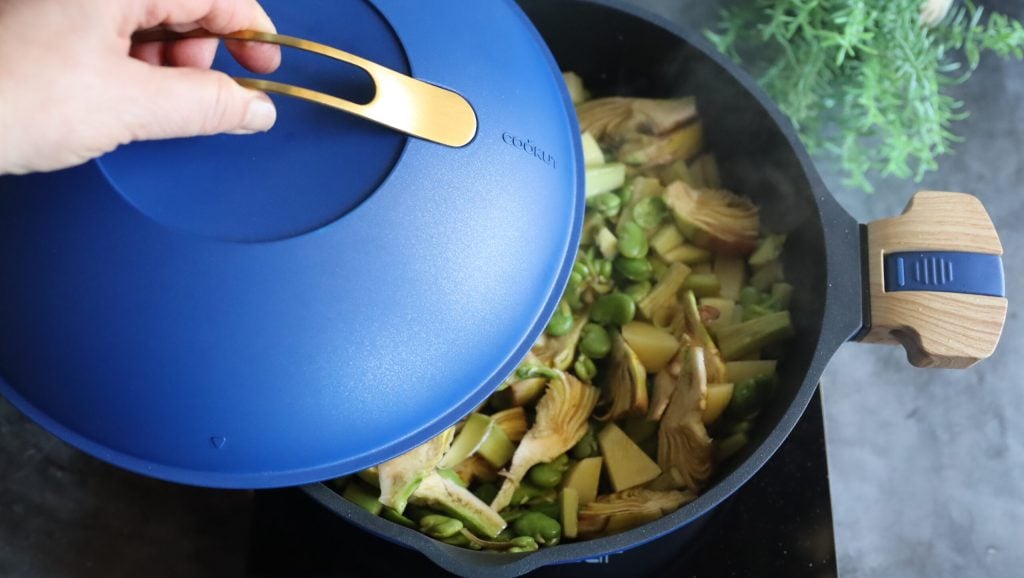
Add warm water and adjust the salt.
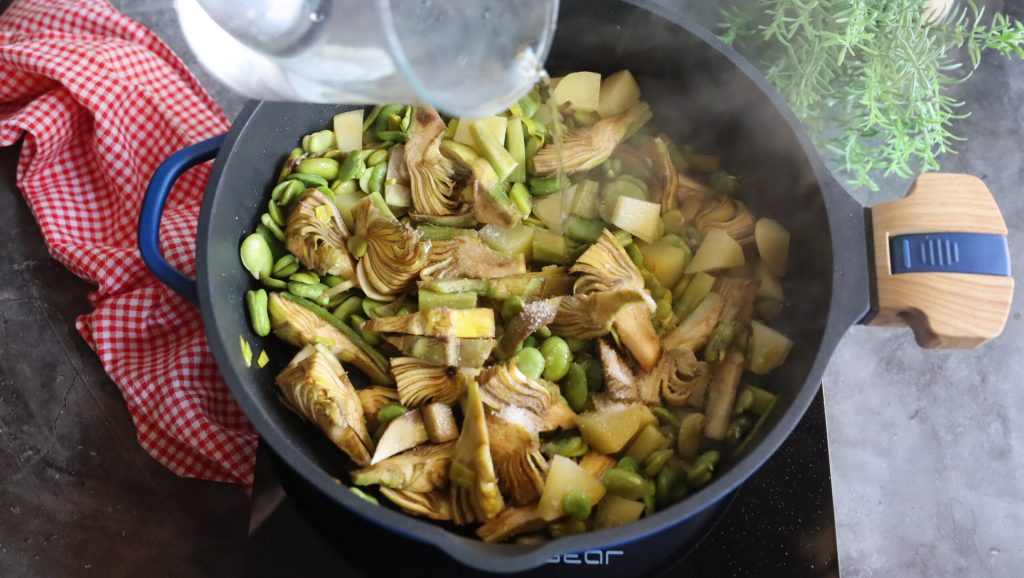
I also added some lemon peel zest. Cover and cook for 15 minutes on a low flame.
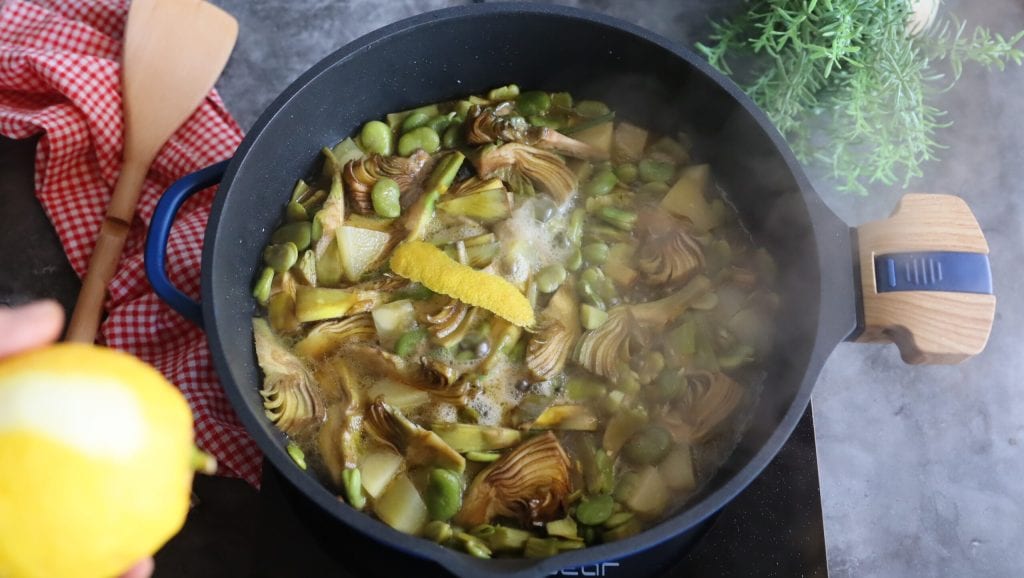
Have you noticed the microbeads on the lid? The steam water slides back into the pot and prevents dry cooking.
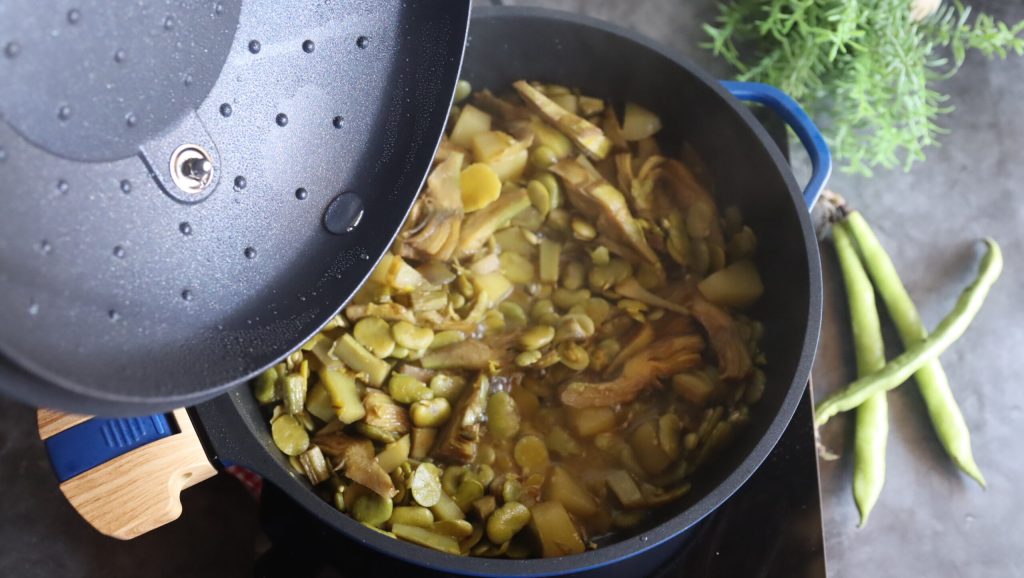
Let me tell you about the importance of the little arrow you see in the photo pointing towards the small spout on the pot: this way it seals but with a small vent for steam. While
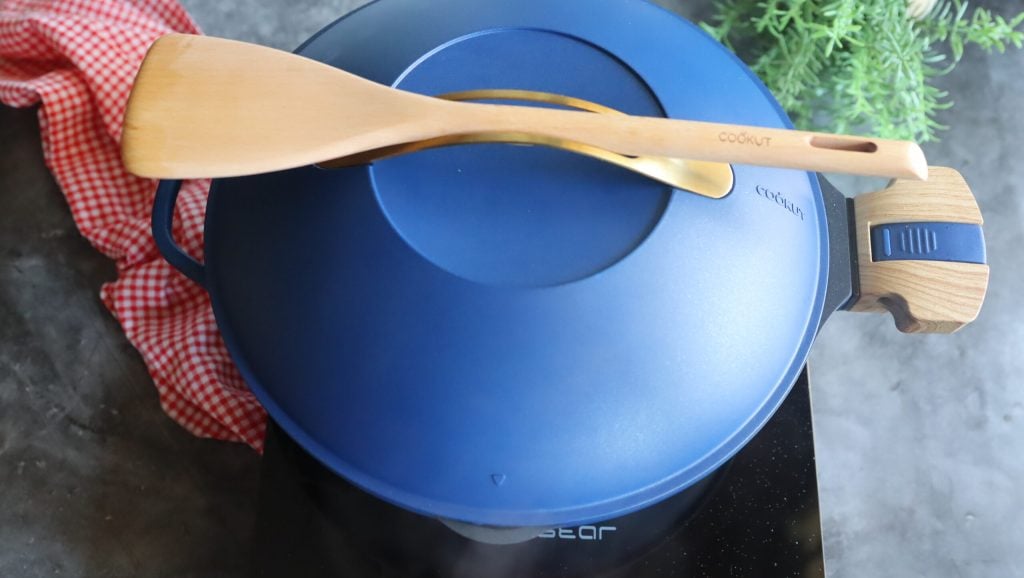
if you move the arrow to the right (or left, it doesn’t matter) it completely seals without any steam escaping. This allows for more tenderness in the food cooked in the Cookut pot.
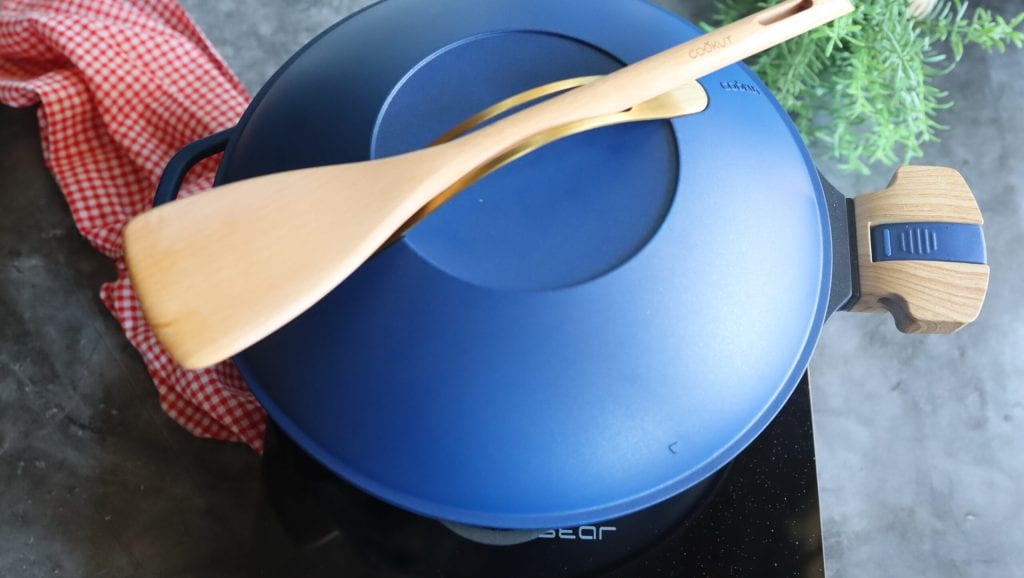
After the time has passed, remove the parsley stems and leave uncovered for another 10 minutes until the water is completely dry.
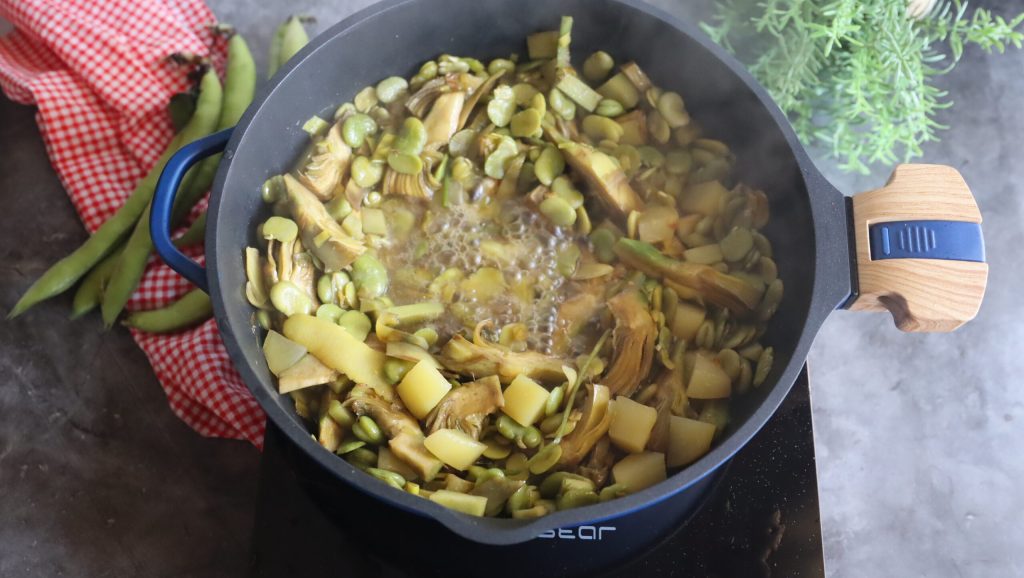
To taste, sprinkle with some chopped parsley leaves.
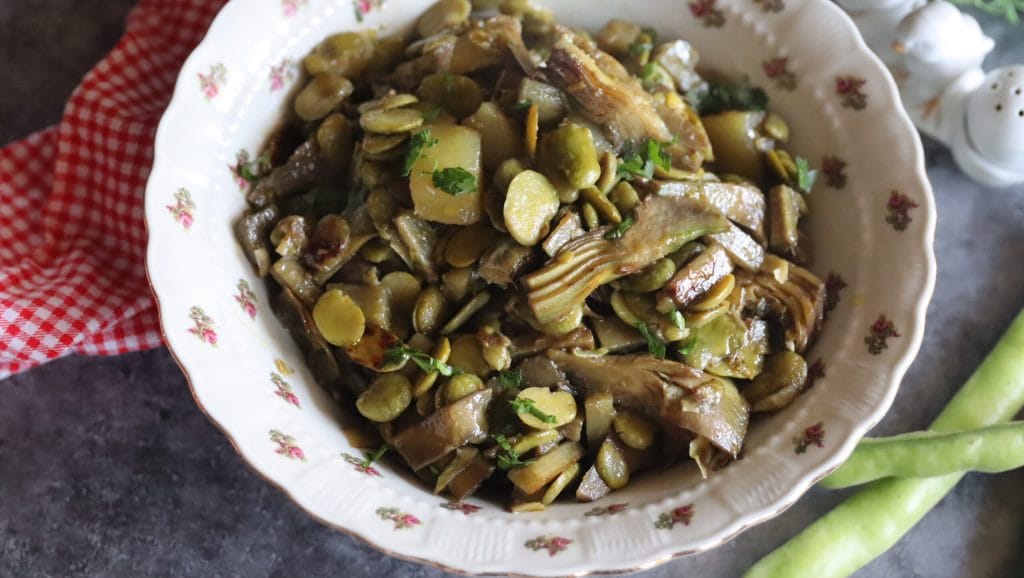
And here it is ready: a side dish of artichokes and fresh fava beans also ideal for cheerful picnics on Easter Monday with family or friends.
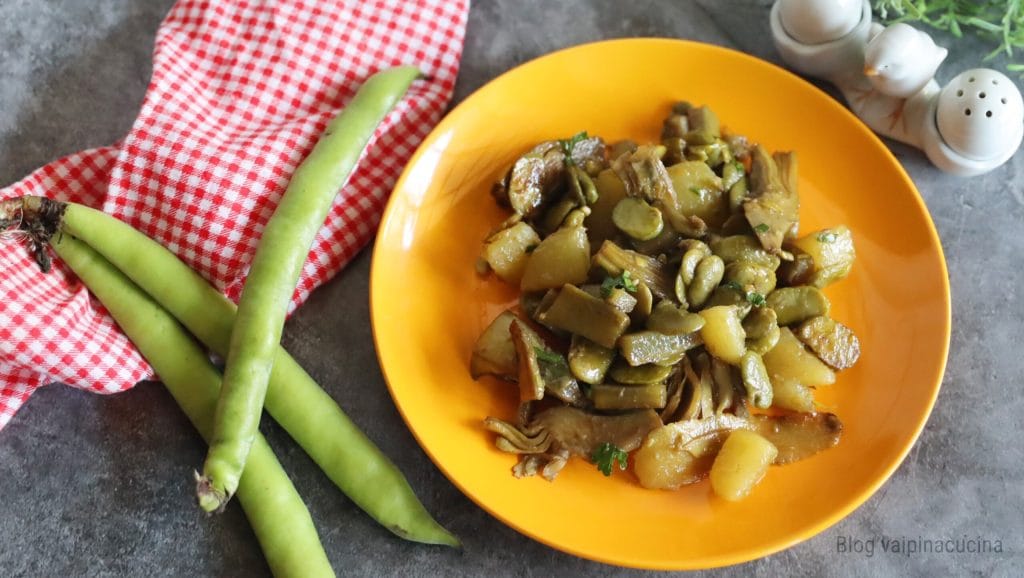
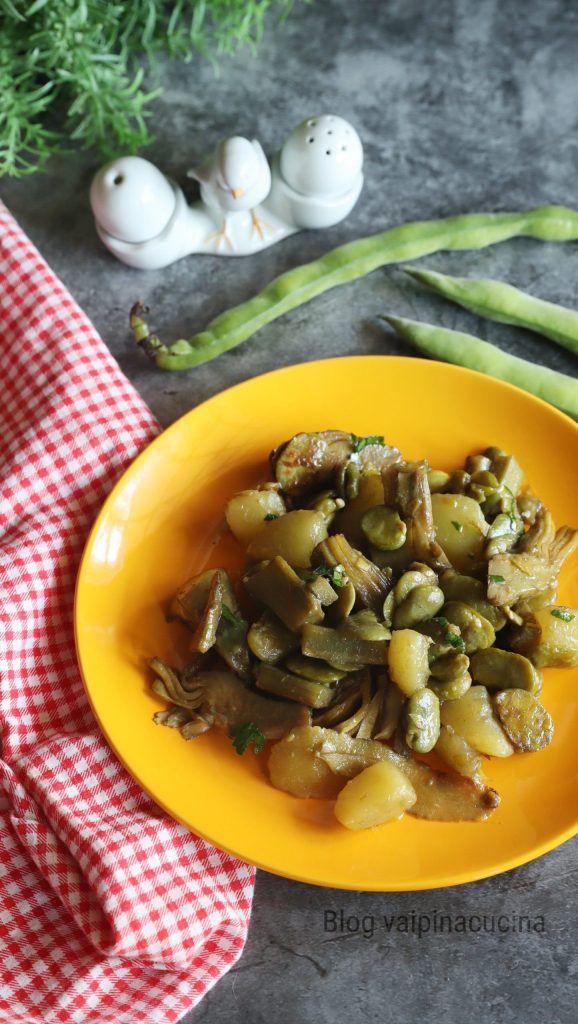
Tips
I also recommend following this recipe: FRESH FAVA BEANS IN OIL.
I also recommend following this recipe: FRESH FAVA BEANS IN OIL.
https://blog.giallozafferano.it/vaipinacucina/fave-fresche-sottolio/
https://blog.giallozafferano.it/vaipinacucina/fave-fresche-sottolio/
https://blog.giallozafferano.it/vaipinacucina/fave-fresche-sottolio/
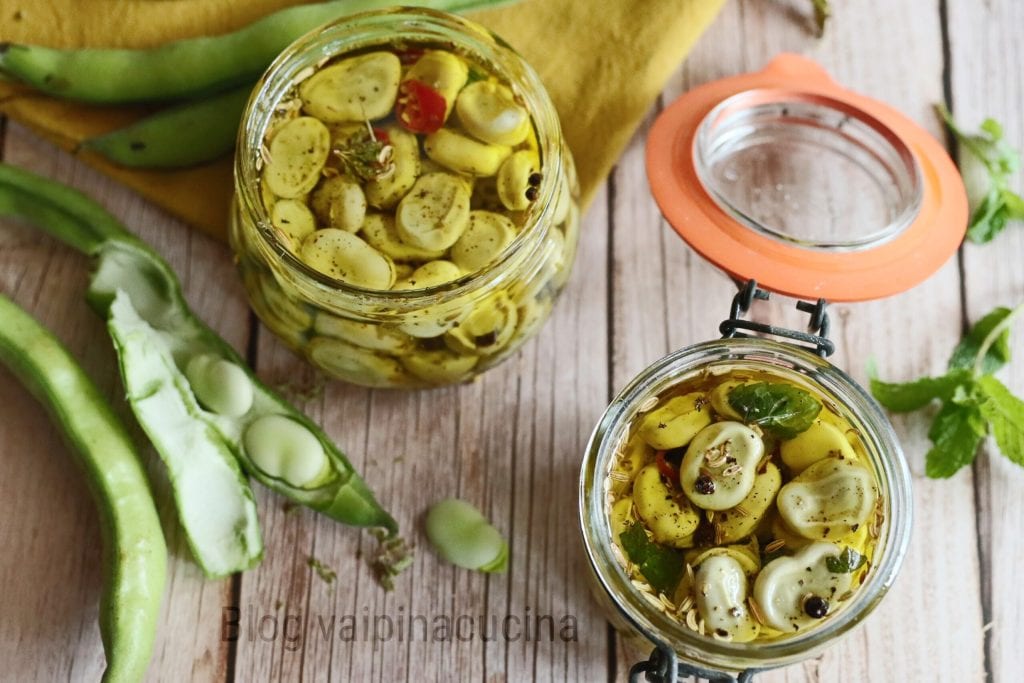
FAQs (Frequently Asked Questions)
Why should you warn when cooking or selling fava beans in restaurants or commercial establishments?
It is a necessary warning for those affected by favism, a pathological condition related to an enzyme deficiency in the blood. Those affected could have severe consequences.
Can people with high blood pressure eat fresh or dried fava beans?
Yes, people with high blood pressure can certainly eat fresh or dried fava beans, as they promote diuresis and have a positive effect on health.
Can you eat fava beans every day?
For a healthy diet, the Health Ministry guidelines recommend consuming at least 150 grams of fresh legumes 3 times a week. Therefore, considering that fresh fava beans are available in the spring season, we could take advantage of it peacefully.
“`

